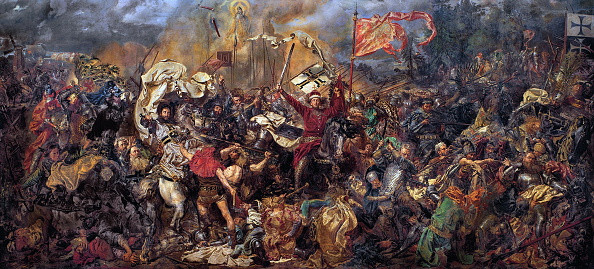Poland: Ancient remains of knights towers reveal life in the middle ages

In the southern Polish region of Silesia, dozens of earthen mounds scatter the land. They are unique remains of medieval residences constructed between the 12<sup>th and 15<sup>th Century to house knights.
The middle ages in Poland were troubled times: wars raged, religion was omnipresent and knighthood formed an inherent part of the feudal and military system in place – such an environment was in fact not so different to other countries such as Western and Central Europe.
The Polish knightly class really began to emerge in the latest part of the 12<sup>th Century, at a time known as the division of provinces. While Poland had been unified since the 10<sup>th Century and would be again in the 14<sup>th Century, this period marked the division of the country between the sons of King Boleslaw III, after his death in 1138.
This fragmentation of Poland led to increased instability and tensions with external pagan tribes and religious knight orders. Polish medieval history is indeed closely associated to the Teutonic Knights who stayed in the country for centuries in their castle of Malbork – one of the largest castle in the world - and engaged in various wars with Poland.
In this context, Polish knights became crucial to protect the territories. They were given lands to control and buildings to live in, in exchange for promising their military services to their rulers whenever they were needed.
Wooden tower residence
The earthen mounds uncovered in Silesia were found in the context of a project funded by the Museum of the city of Gliwice since 2015. Using a device called "magnetometer" – archaeologists were able to identify underground magnetic anomalies.
This non-invasive method is generally used to point archaeologists in the direction of ancient relics, pits or in this case, architectural structures. here, the mounds were precisely localised, and middle ages experts associated them to remnants of ancient wooden towers.
On the territories they were given, knights and their families lived in such towers, with good visibility on the surroundings which allowed them to efficiently control and manage their land.

The next step of the archaeological project will entail the excavation of the mounds, in the hope of finding fragments of vessels, weapons and other everyday tools to date the tower, remains more precisely and to enrich the knowledge of knights' lives at the time.
Mysterious knights
There is one thing that modern archaeological technology may not be able to uncover: the names of the knights who inhabited the towers for many remain a mystery.
"Unfortunately, we know little about the knights who used to live near today's Gliwice. From the documents, we only know the name of Piotr de Tarnowitz, who lived in Tarnowice," Radosław Zdaniewicz, an archaeologist responsible for the project told Polish news website Science in Poland.
In absence of additional written historical sources, it will be impossible to know for sure exactly who the knight living in the towers were.
Though the excavation of the mounds may eventually add to our knowledge of life in the Poland of the middle ages, the personal stories and struggles that unfolded in the wooded towers of Silesia may well remain an enigma.
© Copyright IBTimes 2025. All rights reserved.






















